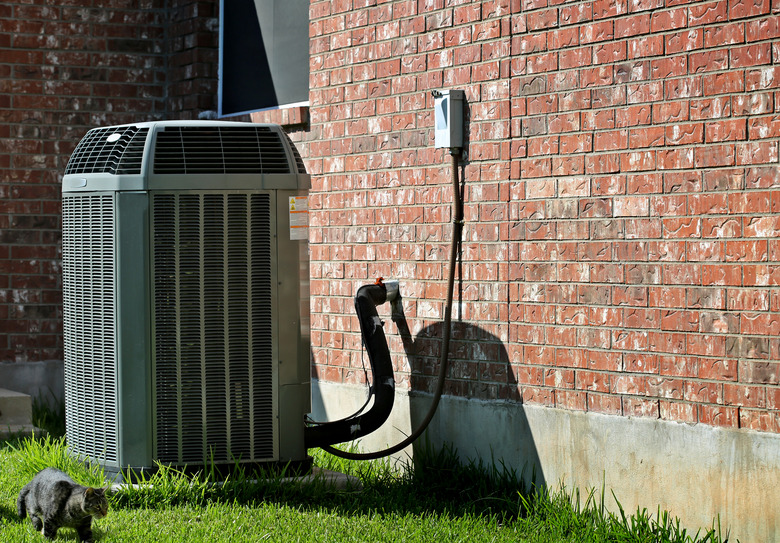How To Find The Tons On An A/C Unit
A properly maintained central air conditioning system can last from 10 to 15 years or even longer depending on how often it is used, and use is highly dictated by the climate in your area. When this system needs to be replaced, you should start by finding the tons on the A/C unit, as this will help you determine what sort of replacement unit is needed.
It is essential to install the right-size system. If the system is too large, it will run more often than necessary, leading to higher utility bills, damp air and too much wear and tear. When the system is too small, the space will not cool properly.
Finding the Tons on an A/C Unit
Finding the Tons on an A/C Unit
To find the tonnage of an A/C unit, start by looking on the label located on the condenser cabinet. The condenser cabinet can be found at the side or on the roof of the building, and the actual condenser, valves, tubing, fan and other components are inside. The label with information about the A/C unit should be on that outside cabinet.
Most HVAC manufacturers do not show actual tonnage. Instead, A/C capacity is shown in British thermal units, or BTU. This reflects the seasonal energy-efficiency ratio or how well the unit cools a room. The majority of home air conditioning units in the United States range from 5,000 to about 20,000 BTU. The BTU you need will vary based on both the square footage of your home and the part of the country in which you live.
In most cases, BTU is listed rather than tonnage, but occasionally, the A/C tonnage is included. If the actual tonnage is not listed and you do not see the BTU number, look at the model number. There should be an even, two-digit number between 18 and 60 that represents the BTU. If not, you can contact the manufacturer for more information based on your model number. Once you have the BTU, divide it by 12,000 to get the tonnage. For example, if the BTU is 12,000, the unit is 1 ton.
Can’t Determine the BTU Number?
Can't Determine the BTU Number?
If you don't see the BTU number, look at the model number again. Instead of an even, two-digit number between 18 and 60, the manufacturer may have placed a zero in front of the two digits in that number range. Therefore, if you see "024," this could indicate 24,000 BTU, or 2 tons. It is possible that the A/C unit in place was never the right size for the building, which would require you to replace it with a unit of a different tonnage.
The best A/C units are durable, properly sized and efficient. Using a high-efficiency air conditioner and performing regular maintenance can reduce energy use and costs by 20 to 50 percent, so this is another important consideration. Check the unit's energy-efficiency rating when shopping; it is usually 8 to 11.5.
To arrive at an energy-efficiency rating, the manufacturer divides the BTU per hour by the number of power watts consumed at a certain temperature, such as 95 degrees Fahrenheit. A rating of 10 and up is the most efficient. As an added bonus, energy-efficient air conditioners also help the environment.
Types of Central Air Conditioners
Types of Central Air Conditioners
There are two kinds of central air-conditioning systems. Packaged central HVAC systems have the condenser, compressor and evaporator in one cabinet. This is most often found on top of a concrete slab by the home's foundation or on the roof. The air travels in and out of the unit through ducts and into rooms through vents.
Split-system central AC units place the compressors and condensers in outside cabinets with the evaporators in an inside cabinet, with or without heat pumps or furnaces. These kinds of systems are economical for homes that already have furnaces but no A/C. When replacing or purchasing either kind of system, the ductwork will also be an important determining factor in the final decision.
